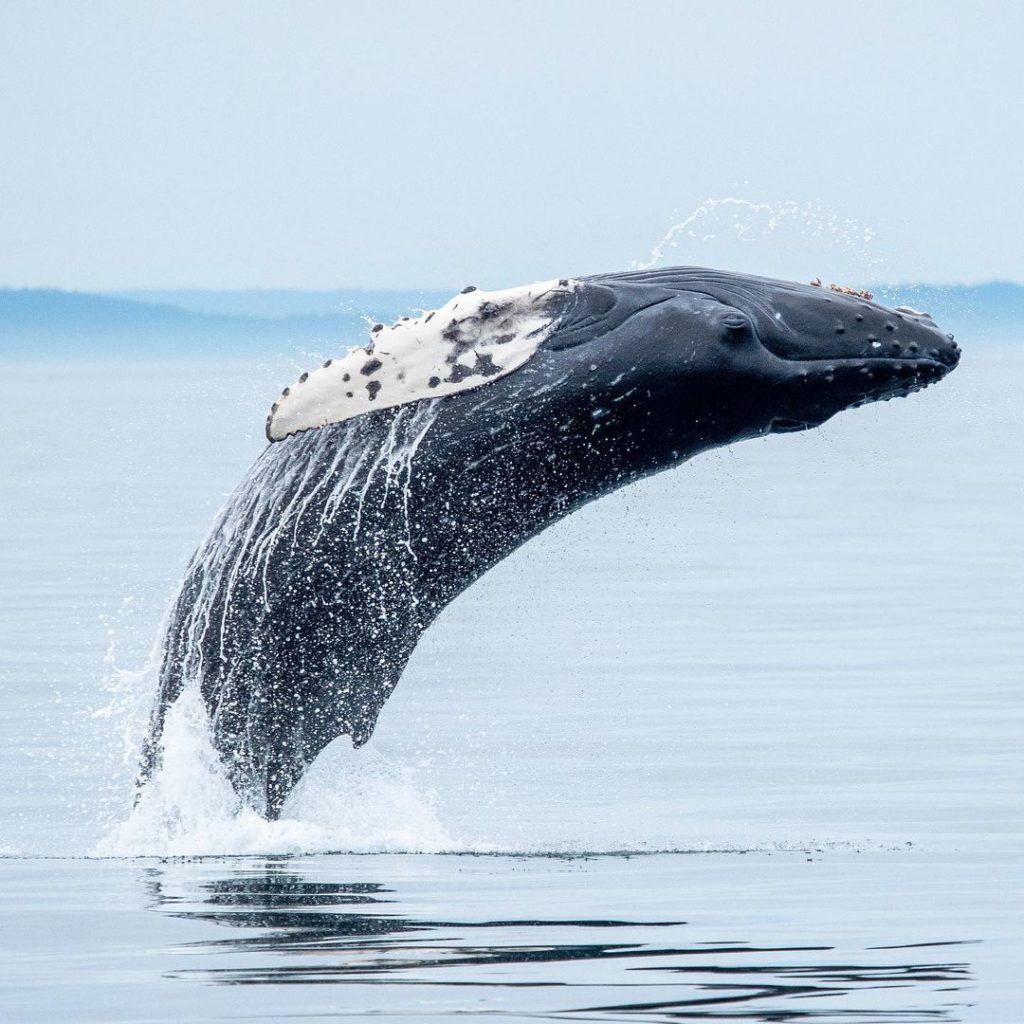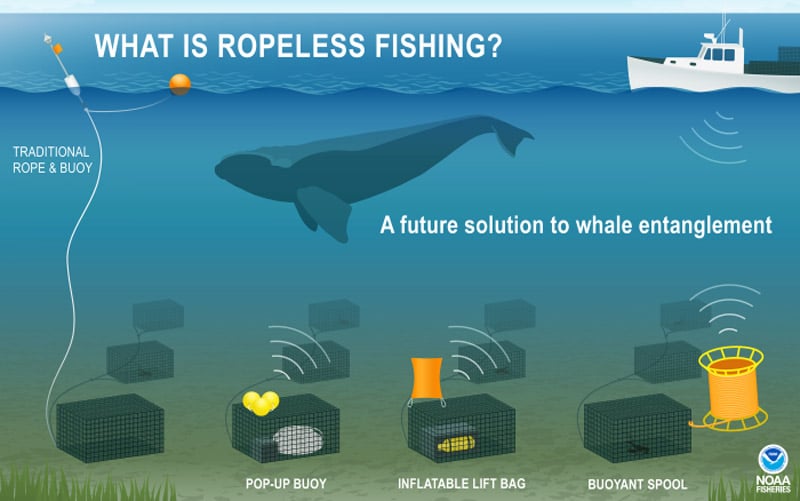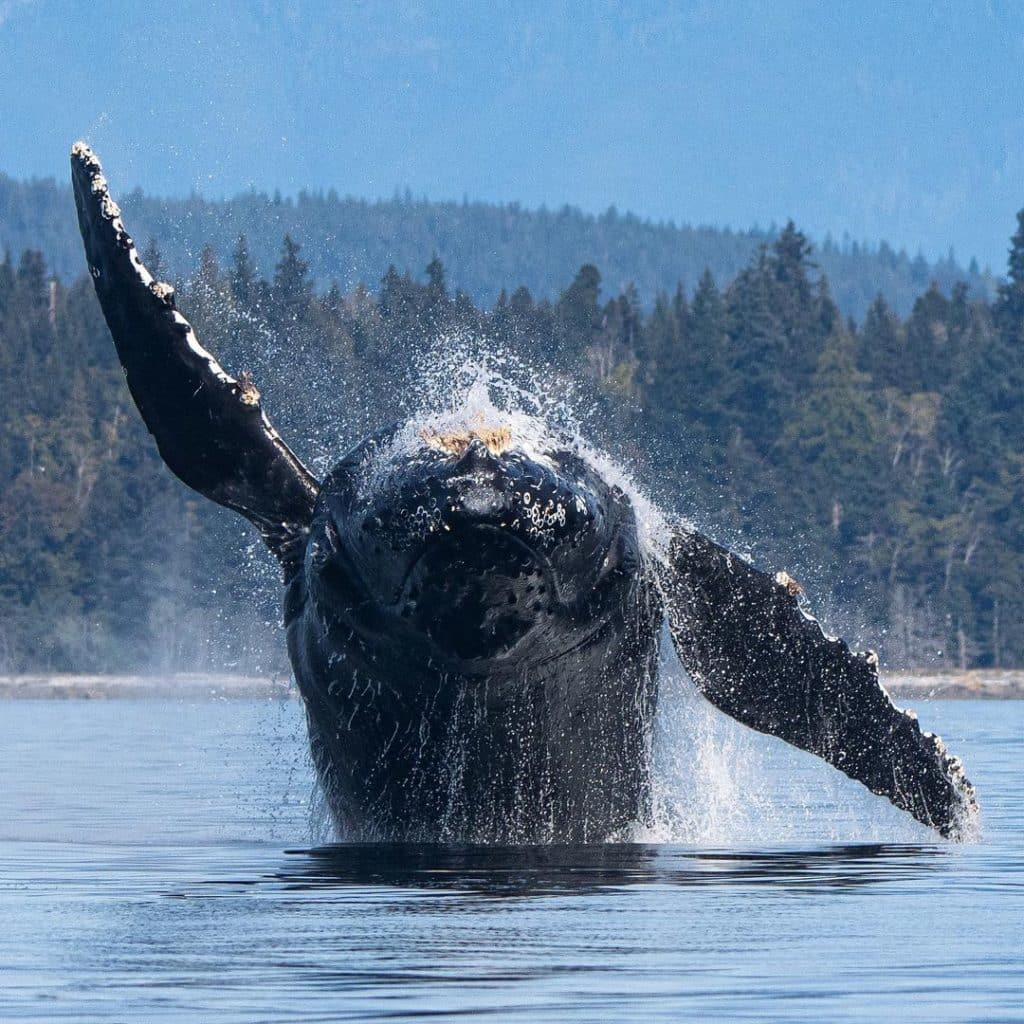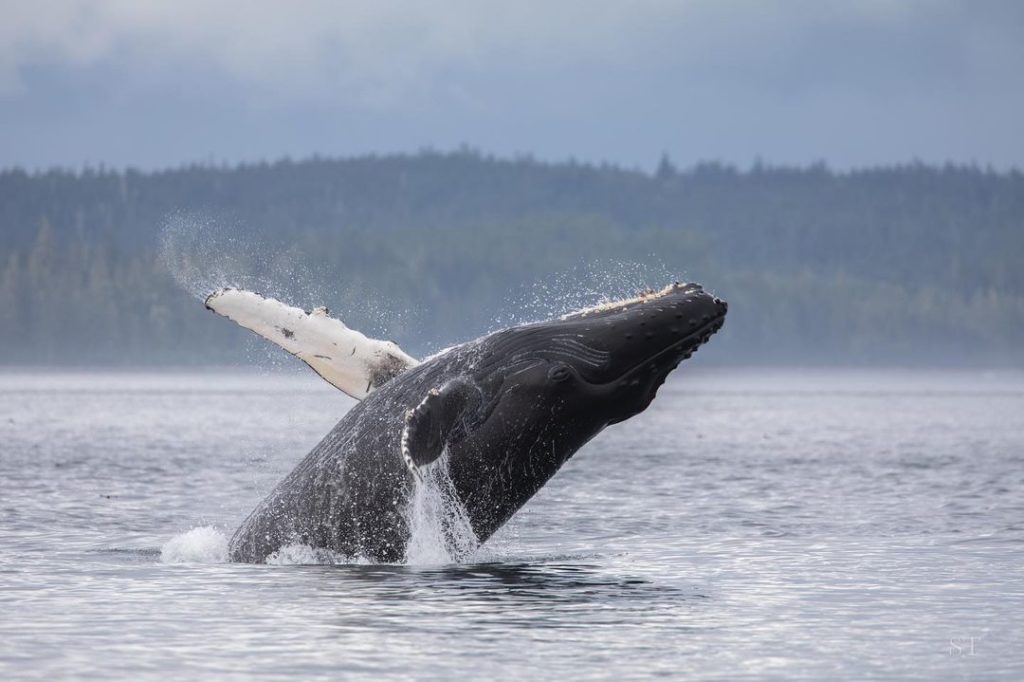After commercial whaling nearly exterminated the great whales from Canada’s Pacific Ocean, some nearshore species like humpback and grey whales have begun to make a recovery. In an increasingly trafficked, noisy and rapidly changing ocean, great whales are facing another hurdle as they return to coastal areas: entanglement in fishing gear. Entanglement refers to the wrapping of lines, netting, or other man-made material around the body of an animal and can cause drowning or injury as well as affect their ability to feed, swim, and reproduce. 1

The full extent of how entanglement is affecting cetaceans, is difficult to assess as many cases are never observed. For fishermen, entanglement incidents can result in high costs due to loss of their gear and catch.
Innovations in fishing technology, like “whalesafe” gear, can help the commercial fishing industry and whales thrive alongside one another. “Whalesafe” gear is an emerging alternative to our current methods of fishing and encompasses a range of fishing gear designed to minimize the risk of entanglement to whales and other marine mammals. The gear ranges from simple ropes and weak links designed to break at 1700 lbs. or less to on-demand systems triggered using acoustic release technology that carry traps from the seafloor to the surface with the push of a button. Rope on-demand (ropeless or pop-up) gear has the potential to eliminate the need for rope in the water column and buoys at the surface in trap-based fisheries, thus reducing the risk of entanglement to marine mammals.4
Some of these on-demand systems have been used for decades in scientific and military applications. Now, others are being purpose-built and tested for trap-based commercial fisheries like crab, lobster, shrimp and prawn. Testing of whalesafe fishing technology is well underway on Canada’s Atlantic coast and is set to become mandatory in all non-tended, fixed-gear fisheries by the beginning of the 2023 fishing seasons. To help fishermen transition successfully, the Canadian government created a $20 million Whalesafe Gear Adoption Fund. Today, some of that on-demand gear paid for by this fund is making its way west to British Columbia (B.C.).5 The Canadian Wildlife Federation’s (CWF) Entanglement Mitigation Specialist, Wendy Szaniszlo, will be working with crab and prawn harvesters to trial two on-demand systems on Vancouver Island.

“On-demand gear supports sustainable fisheries while eliminating the risk of whale entanglement. It’s a win-win for whales and for harvesters involved in trap fisheries.” -Wendy Szaniszlo, CWF


The Atlantic coast is no stranger to fishing closures, with multiple closures in effect to protect the critically endangered North Atlantic right whale. In recent months, the Pacific coast has begun to adopt commercial closures as well to help alleviate the threat of entanglement to recovering populations of nearshore whale species. In April 2022, the California Department of Fish and Wildlife (CDFW) announced the closure of the commercial Dungeness crab fishery in several zones along the California coast. While this closure shortened the season for many fishermen, the CDFW has designed these new regulations to minimize risk to whales and provide for a long-term viable fishery to fishermen. 6
Along the west coast of Vancouver Island, grey and humpback whales call our temperate waters home during the summer feeding season. Both the Pacific Coast Feeding Group and Western Pacific population of grey whales in B.C. were assessed as Endangered by the Committee on the Status of Endangered Wildlife in Canada’s (COSEWIC) in 2017. 7 Humpback whales are managed as one population in the Canadian pacific and listed as a species of Special Concern in B.C.; however, there is significant concern by some researchers that the humpback whales off Canada’s Pacific Coast are managed as one population, despite the fact they migrate to several different breeding grounds.8 As soon as the same humpback whales pass into US waters, they are managed as different populations, based on where they migrate to breed and give birth, of which two are currently recognized as being Endangered (Central America and Western North Pacific populations) and one as Threatened (Mexico population).9

This fall, on-demand fishing technologies are set to be tested in Clayoquot and Barkley Sounds on the west coast of Vancouver Island. This testing comes at a critical time as nearshore whale species at high risk of entanglement continue to recover from near extinction in B.C. waters. CWF Marine Program will charter commercial crab and prawn vessels and their crews, as well as interested commercial guides, and provide participants with on-demand gear and training to trial two models of on-demand gear. If successful, the implementation of whalesafe gear can help fishermen continue harvesting sustainably while minimizing the risk of entanglement to whales.
The CWF Marine Program still has room for participants in the upcoming gear trials. If you are a commercial or sport fisherman interested in learning more about on-demand gear and participating in gear testing , please visit canfishgear.ca or reach out directly to 1-877-599-5777 ex 261.


